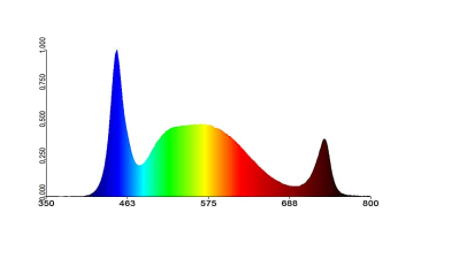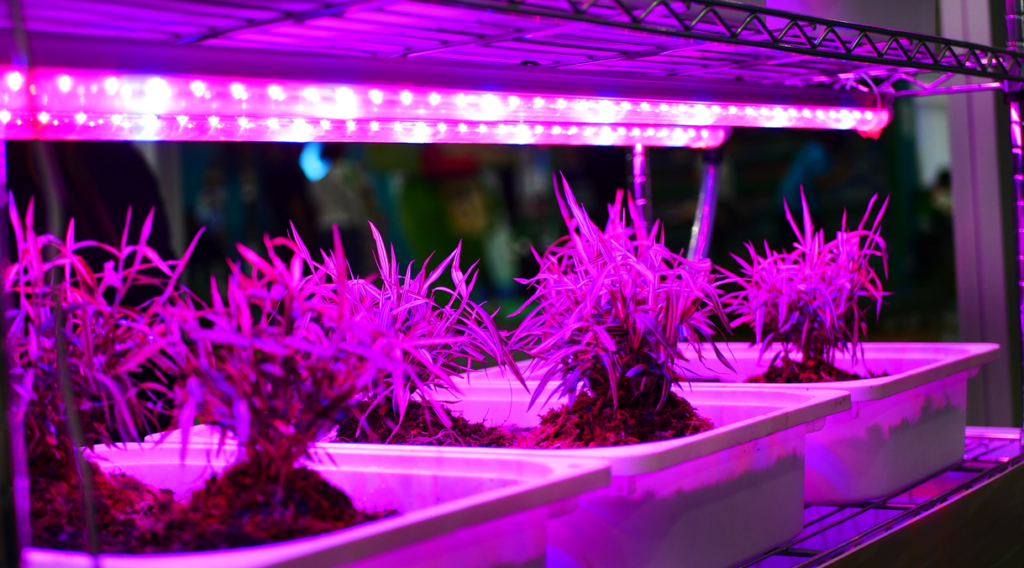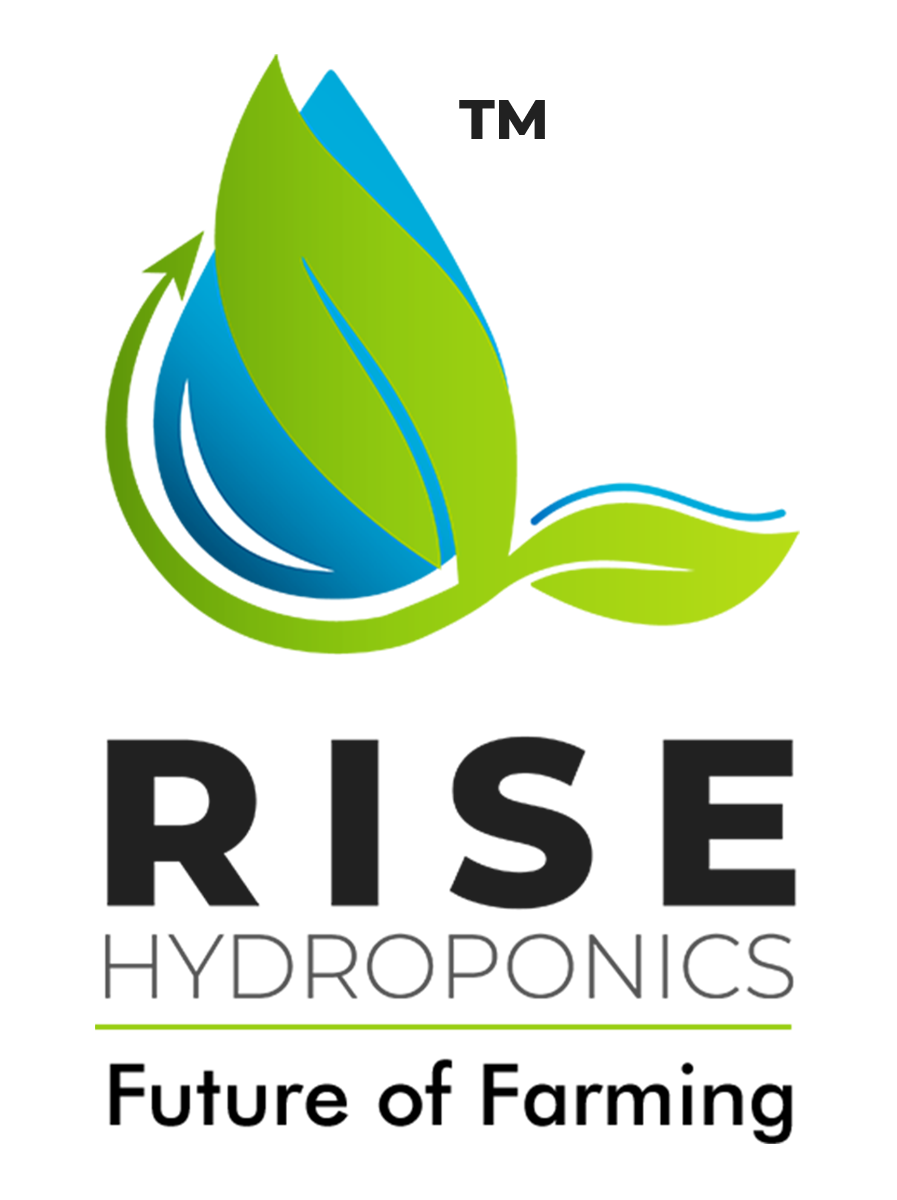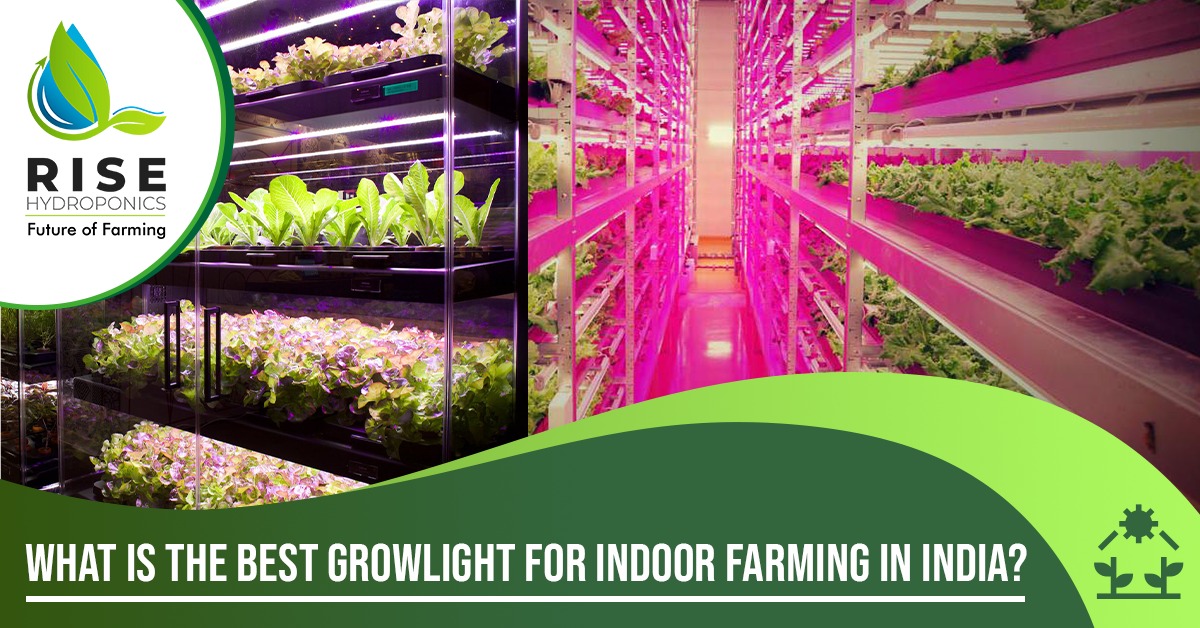Of course, you must have heard of hydroponics. You also know that these systems can be set up inside your house. However, there is a big question that has made people inquisitive. That is, do the plants growing under hydroponics need sunlight? The answer to this question is a mix of both no and yes. Instead of saying a “yes” that plants do require sunlight, it would be accurate to say that they also need the dark.
In hydroponics, we provide light to plants so that they can grow. But, they do not need direct sunlight. What plants need is the right type of light and in correct amounts.
Without going into the Wikipedia definition of growlights, let us just say that your plants need some kind of light for growth. That light is your growlight. They do not mimic sunlight, but rather supplement it. These lights are designed for growth optimization and improving excess sunlight by presenting certain spectra during the process of growth.
This blog discusses everything about the growlights and gives you a rundown on which is the best among all kinds of growlights.
Understanding the color spectrum
When you shop for growlights, you will notice that most lights are labeled as 2700 K or 4000 K. These numbers refer to the relative coolness or warmth on that color spectrum. The growlight spectrum refers to light’s electromagnetic spectrums produced by a source of light to boost plant growth.

The higher the number you choose, the cooler the light will be. 6500K works best for foliage growth and 3000K works best to produce flowers and eventually fruits. In hydroponics, we aim at replacing the light spectrum with the one that the sun produces.
Did you know:With higher spectrum bulbs, you can easily produce seedlings, root crops, and green leafy veggies!
Visible light falls between 390-700 nanometers. There are different wavelengths inside this wavelength range that let the human eye see different colors. The scattered colors in this range make the VIBGYOR. The light with the lowest energy and longest wavelength has to be red light. Violet and blue lights contain more energy and shorter wavelengths.
Here are figures that discuss the visible light spectrums, the functioning of chlorophyll, and the other light spectrums you need in hydroponics plants.
RED LIGHT SPECTRUM
- The spectrum’s low energy part has to be the red light
- It is needed for blooming of plants and flowering. Weak or delayed flowering is a result of deficiency in the red light spectrum.
- Growers should understand this spectrum because when plant growth happens indoors, it is their call to replace sunlight.
- Growers should understand this spectrum because when plant growth happens indoors, it is their call to replace sunlight.
BLUE LIGHT SPECTRUM
- Leaves on the plants respond to the lights that fall between 390-700 nanometer
- Chlorophyll present in the leaves absorb the light to create food.
- Plants focus on just one segment of the spectrum (495-570 nanometer range)
- Chlorophyll reflects the spectrum’s green part in the spectrum of 495-570 nm range , making the leaves green
Thing to know: It is extremely important to note the spectra of light that affect the plant growth depending on factors like crop species and environmental conditions. Typically, chlorophyll, the plant molecule that converts light energy into chemical energy, is responsible for absorbing most of the light. The light it absorbs is mostly in the red and blue light spectra so that photosynthesis can take place.
Now that you know quite a lot about light spectra, you must know that without photosynthesis, any plant cannot grow or survive. Thus, for photosynthesis, plants make use of light in the PAR region, that is, the Photosynthetically Active Radiation. The diagram below discusses that in detail.
- The light wavelength in the blue light spectrum is 400-500 nm.
- It is energy packed & affects leaf growth and chlorophyll production. You only need it in small amounts than red light.
- In absence of proper blue light, leaves develop yellow streaks and grow weaker.
PAR (Photosynthetically Active Radiation) (400 nm to 700 nm)

TYPES OF GROWLIGHTS FOR INDOOR FARMING

LED GROW LIGHTS
LED growlights are more expensive than fluorescent bulbs. But, the LEDs consume half the electricity compared to any other light and also last five times longer. However, we advise not rushing to a hardware store to get an LED light. That is because those lights are not meant for plants. You need to get hold of special lights that you can buy from horticultural suppliers or RISE Hydroponics.
LEDs produce the least amount of heat compared to bulbs. You can find them in full-spectrum form and have greater intensity of light per square foot.
Pro tip:The hi-efficiency 22W Full Spectrum (400-750nm) Light from Rise Hydroponics works great wonders for vegetables and green leafy plants. These growlights have been tested well to give up to 30 percent fresh yield as it has 15% Added Far Red(IR :730nm)
Fluorescent grow lights
A decent grow light for the starting seeds and houseplants can be the fluorescent bulb. T12 denotes the fluorescent light bulbs. These supplement the natural light that comes from your windows and in situations where you desire modest lighting. These growlights have weak intensity. We suggest you to place placing them within a few inches of your foliage to have a great effect.
CFLs, on the other hand, are narrower than the standard bulbs and have higher intensity of light. You can use CFLs if you have a small space and for your sun-loving plants. CFLs screw perfectly into any ordinary fixture of incandescent light.
We suggest looking for fluorescent grow bulbs, preferably full-spectrum, that provide you with the correct light balance for blooming plants.
HID (hi-density discharge) or HPS (hi-pressure sodium) lights
Before LED growlights came into the picture, HID grow lights continued to rule the indoor planting scenario. They are expensive, extremely powerful, and require special fixtures of light. They emit loads of light and consume electricity in an inefficient manner. Despite all of that, many people still use them because they are quite effective.
If you want to grow lemon bushes or tomatoes, HIDs are the best bet. The HID light penetrates deeper into the foliage. You will find two kinds of HID bulbs- the MH or metal halide bulbs that help in vegetative growth and hi-pressure sodium (low-spectrum) bulbs that help to flower.
Unfortunately, for each of these HID kinds, you need individual fixtures.
The Final Verdict:

All plants have varying light requirements at different stages. Thus, each light can be more suitable or beneficial in certain circumstances.
HIDs, for instance, are best for vegetative growth and provide the majority of the light spectrum. You can use them in larger gardens that grow herbs, spices, fruit trees, peppers, and tomatoes.
Fluorescent bulbs or lights do not emit heat onto plants, are cheaper and more convenient. They are best suited for propagation, and are a boon for simple plants. You can grow leafy edibles, wheatgrass, lettuce, and herbs with these lights.
LEDs are best for vegetative growth and non-flowering plants. These lights last long and are super efficient. They produce near-zero heat and the light doesn’t lose focus when kept farther away from the plants. You can easily grow leafy edibles, wheatgrass, lettuce, and herbs with the help of LEDs.
Our pick: We prefer fluorescent lighting as the ideal indoor farming growlight. Any beginner can find this light in a store near them. They require smaller fixtures and help to conserve power. There will be no incidence of overheating with these lights and you can completely forget about any upfront investments.
Conclusion
Of course, there is still no substitute for the full light spectrum that you can acquire from the sun. But, plants in the hydroponics system require more duration of light. We recommend at least 14-18 hours of light and six hours of complete darkness for plant health.
Hence, you can easily get any of these artificial lights that best suit your interest and get best growing with your crops. We wish you a happy planting season and hope you had a great time reading our blog. For any additional information that you may have on grow lights, please feel free to share with us below!

